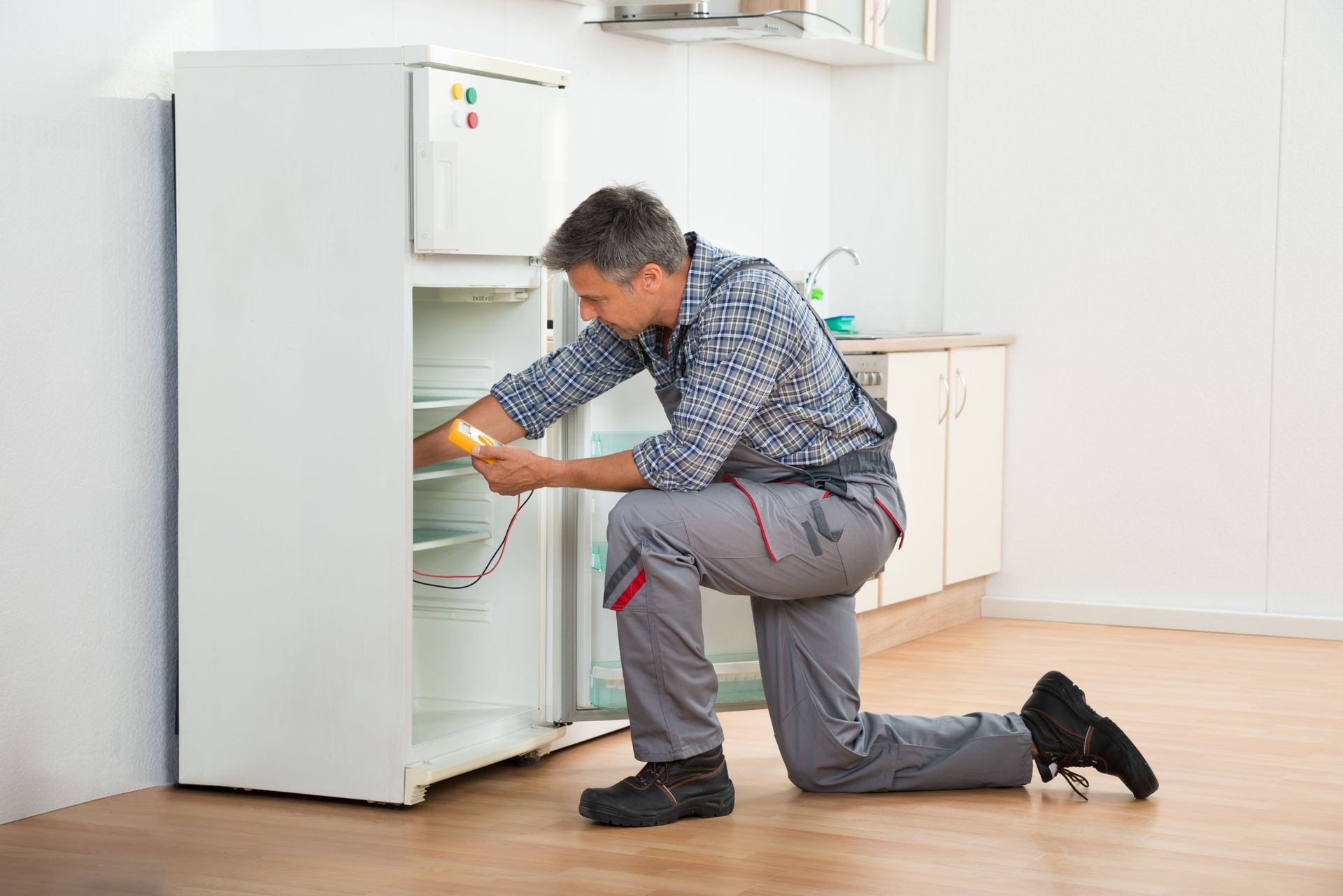September 23, 2025
In recent years, energy bills have become a growing concern for many households. As utility costs rise, many families are starting to scrutinize their electricity usage more closely, especially with local used appliances. Among the various appliances in your home, your refrigerator might be a more significant contributor to these bills than you realize. It's not just about the age of the appliance; many factors, both behavioral and technical, play a part. Keep reading to learn the reasons behind this and ways to mitigate the impact.
Technical Factors Affecting Energy Consumption
The quality of insulation in a refrigerator significantly impacts its energy efficiency. High-quality insulation ensures that cool air is effectively retained within the unit, reducing the workload on the compressor. Conversely, poor insulation allows cool air to escape, forcing the appliance to work harder to maintain optimal temperatures. This increased demand not only raises energy consumption but can also reduce the refrigerator's lifespan. When purchasing a fridge from providers of local used appliances, examining the build quality and insulation can provide insights into its long-term energy efficiency.
The type of compressor used in a refrigerator plays a central role in its energy consumption. Advances in technology have led to the development of more efficient compressors that consume less electricity while maintaining optimal cooling. Traditional compressors switch on and off to maintain temperatures, which can be inefficient. In contrast, newer variable-speed compressors run continuously but at lower levels, offering more precise temperature control and better energy efficiency. Choosing refrigerators with advanced compressors from providers of local used appliances can provide significant long-term savings on electricity bills.
Proper calibration of a refrigerator's thermostat is crucial for maintaining energy efficiency. Exceedingly low settings not only increase energy consumption but can also lead to unnecessary freezing of food. Regularly checking and adjusting the thermostat ensures the appliance operates efficiently. Consulting the refrigerator's user manual can provide recommended temperature settings for optimal energy use. By maintaining these recommended settings, users can significantly reduce energy expenses without compromising on food preservation.
The type of defrost system in a refrigerator affects its energy consumption. Automatic defrost systems usually result in higher energy use due to regular heating cycles to prevent frost buildup. While these systems in local used appliances offer the convenience of maintenance-free operation, they're often less energy-efficient than manual defrost models. Manual defrost refrigerators require periodic manual removal of frost, which can be labor-intensive but more energy-efficient. When selecting a refrigerator, understanding the trade-offs between convenience and energy usage is essential.
A refrigerator's ventilation design significantly impacts its energy efficiency. Proper airflow ensures that the compressor and cooling mechanisms operate efficiently. Blocked vents or insufficient spacing can cause inefficient cooling, leading to increased energy consumption. Manufacturers often have guidelines for spacing around the refrigerator to ensure adequate ventilation. Adhering to these recommendations can optimize airflow and reduce electricity usage, thereby extending the life of these local used appliances.
Usage Habits That Increase Your Energy Costs
Every time a refrigerator door opens, cool air escapes and is replaced by warmer ambient air. This influx of warm air compels the refrigerator to work harder to restore its internal temperature, increasing energy use. Therefore, it's advisable to minimize the frequency and duration of door openings. Planning meals and retrieving necessary ingredients in one go can significantly reduce energy costs. Simple habits like these, when implemented consistently, contribute to long-term energy savings when using local used appliances.
Inadequate organization within a refrigerator can lead to inefficiencies in cooling. Disorganized refrigerators require more time to find items, resulting in the door being open longer. Proper organization ensures that air circulates freely among stored items, improving efficiency. Storing similar items together and labeling shelves can expedite access and minimize door-open times. Organizational skills not only streamline daily routines but also contribute to lower energy expenses.
An overloaded refrigerator impedes the appliance's ability to maintain a consistent temperature. When items are packed too tightly, air cannot efficiently circulate, causing temperature variations. This uneven distribution makes the compressor work harder, escalating energy consumption. It's essential to strike a balance between stocking sufficient food without overcrowding. By ensuring adequate space for airflow, one can enhance both the cooling efficiency and longevity of the refrigerator.
Lowering the refrigerator's temperature more than necessary can increase energy consumption significantly. While colder settings might seem ideal for preserving food, they can lead to excessive energy use and potential food spoilage. We've seen that the ideal refrigerator setting is around 37°F (3°C) and the freezer at 0°F (-18°C). These settings provide a balance between efficient energy use and food safety. Regular temperature checks can ensure that the settings are optimal for both energy conservation and food preservation.
Maximizing the use of a refrigerator's compartments and drawers can enhance its energy efficiency. Each section is designed for specific types of food, with optimal temperatures and humidity levels. Proper use enhances the appliance's cooling efficiency and reduces energy needs. By following manufacturer recommendations on protein, vegetable, and dairy storage, one can maintain food quality while saving on energy. The cost savings from efficient drawer use reflect in lower overall energy bills from using local used appliances.
Environmental Factors That Contribute to Energy Use
The room's ambient temperature significantly impacts a refrigerator's energy use. Refrigerators in warmer rooms or placed near heat sources require more energy to maintain desired internal temperatures. Strategic placement away from heat-generating appliances like ovens can reduce this energy load. Additionally, adjusting the air conditioning during hotter months can assist in moderating the refrigerator's energy consumption. Proper placement and climate control can yield considerable savings in energy expenses when using these local used appliances.
Exposure to direct sunlight can noticeably affect a refrigerator's efficiency. Sunlit areas increase the ambient temperature around the unit, forcing it to work harder to maintain coolness. Positioning the refrigerator away from windows and shielding it with blinds or curtains can mitigate this issue. Over time, reduced sunlight exposure helps lower energy bills significantly. Small adjustments like these, often overlooked, contribute substantially to overall energy savings for these local used appliances.
The refrigerator's proximity to stoves or ovens influences its energy consumption. Heat transfer from these appliances can increase the refrigerator's workload, making it use more electricity. This is important since, according to the U.S. Department of Energy, refrigerators can make up over 13% of a standard home's electricity use. Ideally, repositioning the refrigerator away from such heat sources can reduce its energy demands. When configuring a kitchen layout, considering appliance placement can significantly affect energy efficiency. Thoughtful planning and strategic placement can lead to a marked decrease in operating costs.
Adequate ventilation is essential for the optimal operation of a refrigerator. Insufficient spacing around the unit can hamper airflow, reducing the appliance's cooling efficiency. Manufacturers provide specific guidelines on minimum space requirements to ensure ventilation and prevent overheating. Regular checks for dust accumulation, which can obstruct airflow, are essential. Commitment to creating proper ventilation can reap rewards in the form of energy savings and prolonged appliance life.
Household humidity levels also affect a refrigerator's efficiency. High humidity can introduce excess moisture into the refrigerator when doors are opened, requiring more energy for dehumidification. Using dehumidifiers during humid seasons can mitigate this extra workload. Seal integrity, too, plays a role in managing humidity; well-maintained seals prevent moisture ingress. Attention to these humidity factors can foster a more energy-efficient home environment.
While the refrigerator can be a hidden source of high energy bills, understanding the factors that influence its energy consumption can help you take control. Identifying and addressing inefficiencies requires both routine maintenance and informed purchasing decisions. By incorporating behavioral changes and technological upgrades, you can significantly reduce your refrigerator's impact on your overall energy usage. These steps empower households to not only reduce expenses but also contribute to greater environmental stewardship. The path to energy efficiency is an ongoing commitment with lasting benefits for both home and planet. Contact MC Appliances today to learn from expert providers of local used appliances.










